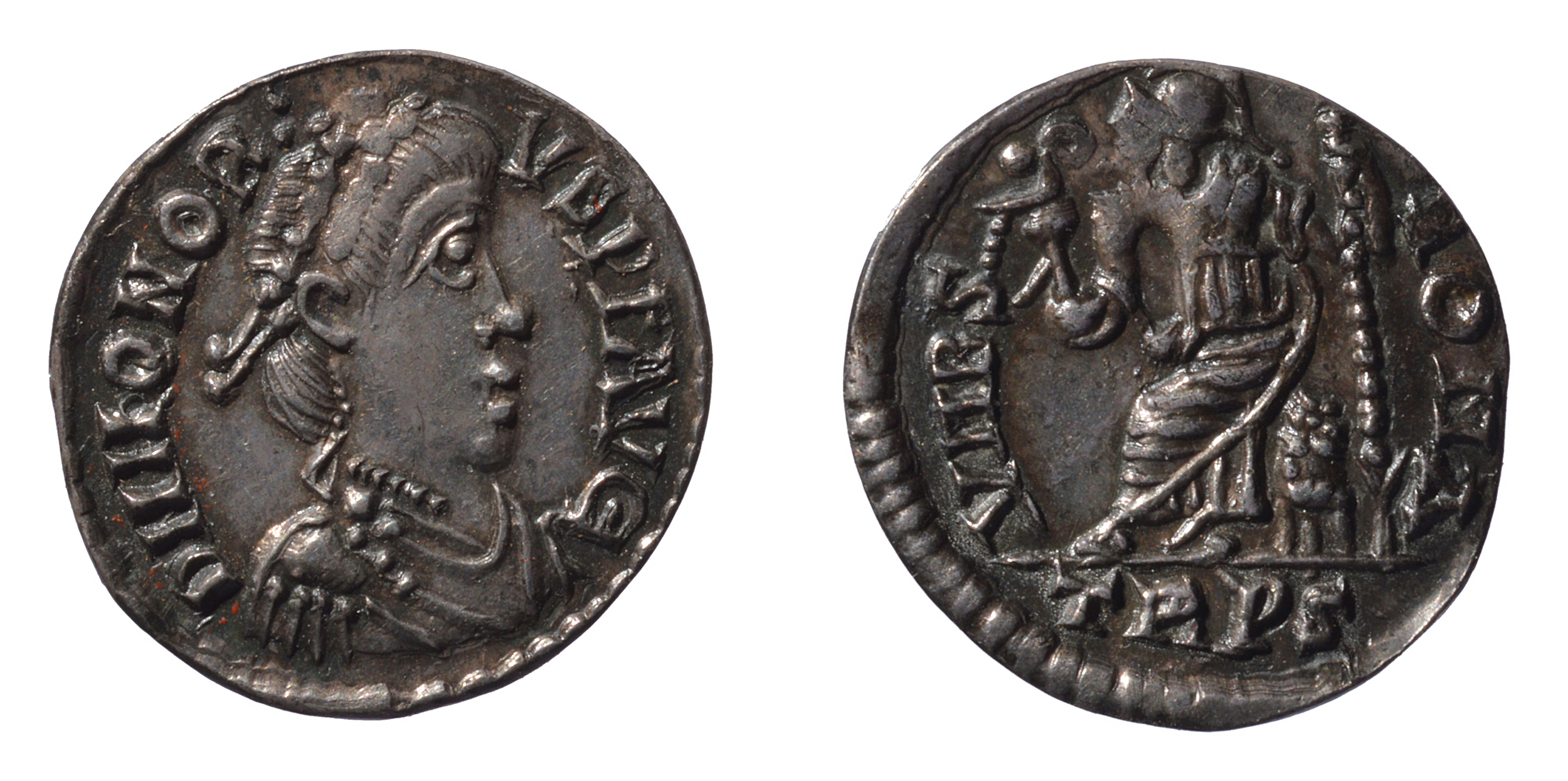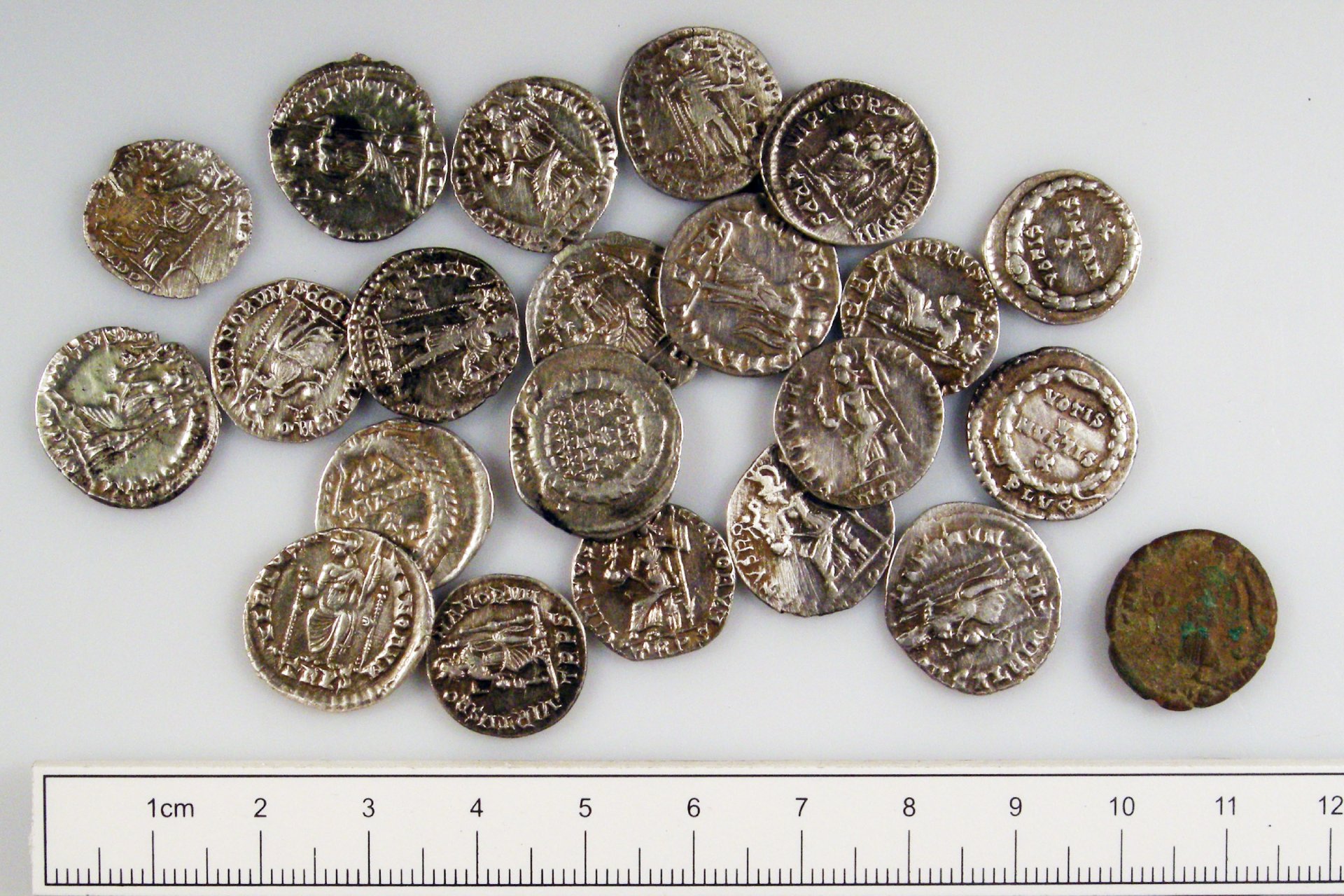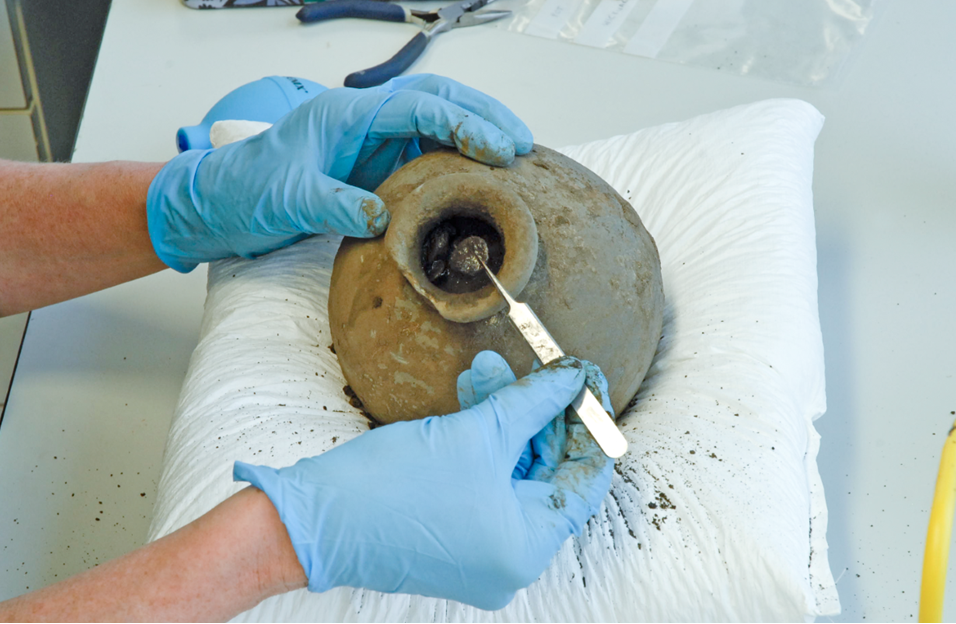Careful removal of coins from the neck of a vessel by a British Museum conservator. (Photo: © The Trustees of the British Museum)
Most of the recent hoards studied by the project were declared Treasure under the Treasure Act 1996. Finds from England and Wales that meet these criteria must be reported by law and if they are then found to be Treasure by the Coroner, a museum has the opportunity to purchase them, with a reward usually going to the finder and landowner. This has meant that hoards have been preserved in public collections for everyone to study and enjoy, rather than being split up and sold.
The growing popularity of metal-detecting as a hobby has led to an increase in the number of hoards coming to light. Not all hoards were found in this way however – Roman objects have been found in the ground by people digging and ploughing since before records began. Even today, some are found by chance by dog-walkers, builders and gardeners. The Hovingham hoard was found by children throwing stones into a stream and a hoard from Terling in Essex became stuck to the wheel of a cart being freed from the mud. Famously, the Hoxne hoard was found when a farmer asked a friend to use his metal detector to find a hammer that had dropped off his tractor. Perhaps the most unusual discovery was made in the 1950s, when seven silver siliquae were found in the window box of a St Pancras flat. We think they were already in the compost, probably dug up with peat from their original burial place!
Not everyone is lucky enough to find Treasure but even a single ancient coin, piece of pottery or flint tool can be shown to your local Portable Antiquities Scheme (PAS) Finds Liaison Officer for recording on an ever-growing database of finds. This huge dataset of finds made by the public makes it possible for us to compare the contents of the hoards with other examples of these objects or check whether they might be part of larger clusters of finds from ancient settlements.
These days Finds Liaison Officers are often the first port of call for hoard finds. They will advise finders to keep the hoard in the ground until it can be excavated by archaeologists. If a hoard is kept together until it can be studied in the laboratory, it is more likely to preserve valuable information such as traces of ancient textile or the sequence in which the objects were placed in the container.

Post written by Eleanor Ghey

